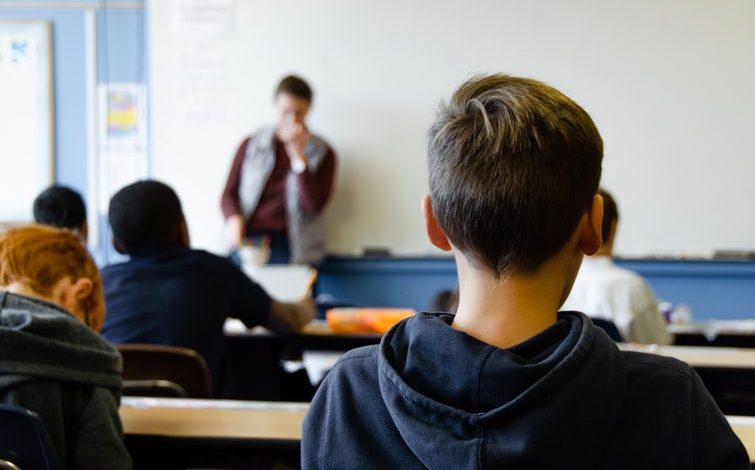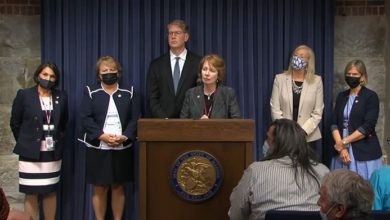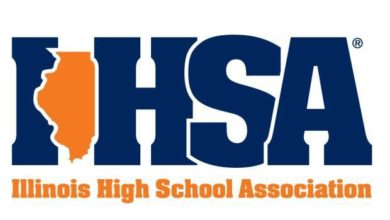Mahomet-Seymour teachers and parent ask about schools’ ventilation systems

Sanitize surfaces, keep social distancing, move children in one direction through the hallways, do symptom checks before each school day, reduce capacity in elevators and wash your hands.
Every parent and school personnel is well-versed in the daily routines that will be required to have students inside a school building next week.
The conversation that may have been lost, though, is that of how ventilation systems in school buildings may play a part in keeping students, teachers, janitors, principals and coaches safe.
When the COVID-19 pandemic began, people were told that wearing a mask does not prevent the spread of the virus. Weeks later, the story changed: the World Health Organization and the Centers for Disease Control recommended that people wear cloth masks to prevent respiratory droplets from traveling through the air, potential making their way to another person.
But late in spring 2020, scientists began to question what role ventilation systems play in the spread of COVID-19.
An outbreak of COVID-19 during Jan. 26 to Feb. 10, 2020, in Guangzhou, China was traced back to three families who had eaten at the same air-conditioned restaurant, the CDC reports.
One of the families had just traveled from Wuhan, China. On Jan. 24, the asymptomatic family ate lunch with the two other families sitting nearby. Later that day, one family member experienced onset of fever and cough and went to the hospital. By February 5, a total of 9 others who had been in the restaurant with that patient had become ill with COVID-19.
Upon further investigation, the families sat approximately 3 feet from each other for about an hour in same the restaurant located on the fifth floor without windows. It was concluded that “virus transmission in this outbreak cannot be explained by droplet transmission alone.”
The distance between the infected individual and the others who were infected were greater than 3 feet. With an air outlet and the return air inlet for the central air conditioner located above one of the tables, researchers concluded that “strong airflow from the air conditioner could have propagated droplets (between tables).”
While the study has not led to ventilation guidelines from the World Health Organization or CDC, ASHARE, the organization that writes codes for all building HVAC systems that must be followed by Illinois law, released recommendations regarding the reopening of school and universities in early May.
A FOIA request from the Mahomet Daily showed that the Mahomet-Seymour School District administration was made aware of the recommendations and were offered free guidance from Mahomet resident Jason Vogelbaugh, Director of Energy Solutions with Alpha Control Services, which did work to integrate the Daikin VRF system at Middletown Prairie, Lincoln Trail Elementary and Mahomet-Seymour High School.
He summarized some of ASHARE’s key elements that applied to Mahomet-Seymour Schools:
- Increase outdoor air volume during occupied hours-HVAC control systems can do this on a schedule if changes are made to the programming.
- Purge air from the facility before and after school-HVAC control systems can do this on a schedule if changes are made to the programming.
- Verify all ventilation fans and exhaust fans are in good working order-our experience is a lot of exhaust fans are neglected over time and are key to eliminating viral load.
- Systems with variable refrigerant flow systems cannot increase outdoor air, but MERV-14 filters can trap the virus particles to prevent recirculation in the types of units installed at MPE, Mahomet Jr. High School and Lincoln Trail.
- The high school can increase OA (outside air) during school hours to help dilute the air-are those steps being taken?
Vogelbaugh’s attempt to help the district understand how the ASHARE guidelines could help reduce the spread of COVID-19 during in-person instruction during the fall went unanswered throughout the summer months.
He made it clear, though, that he was not selling anything.
“As a Mahomet parent and industry leader in HVAC control systems, I would be happy to share HVAC industry guidance for day-to-day operation of mechanical systems in Mahomet schools. Increased ventilation rates and more efficient filtration as options are the top of the list for limiting community spread of infectious disease,” he wrote in an email to Superintendent Lindsey Hall on June 11. “I’d like to make it clear we are not selling anything with this offer, rather, we are trying to simply do our part to disseminate relevant information that can help keep our children safe.”
Alpha Control Services has worked with several schools throughout East Central Illinois for free over the summer months.
The FOIA response does include a “Consumer Usage Reporting” document that shows the district did purchase MERV 8 filters in June and July for Lincoln Trail and Mahomet-Seymour High School. ASHARE recommends MERV 13 or higher filters, noting that MERV 14 would be the best option.
Although the FOIA request’s date only went through July 24, 2020, the district included a set of emails dated Aug. 1 through 3.
On Aug. 1, a fifth grade teacher at Lincoln Trail wrote, “I inquired with Mrs. Hunter (Lincoln Trail Principal) and some of my colleagues to see if they knew they answer, but they didn’t,” to Director Of Facilities Steve Curtis.
“Do you know about ventilation at LT?
-Are our air units pulling in the max fresh air possible (if settings may be adjusted)?
-Are hepa filters in place?
-Is there ventilation for pulling air out of the classrooms?”
Curtis reached out to the district’s Architect Damien Schlitt (BLDD) on July 31 asking if it “would be possible to get a separate written description of the HVAC system/systems for each school. We are starting to get questions from teachers and I’m sure others soon as to how our HVAC systems work. Questions are specific to type of systems, how they work, outside air mis or exchanges, how much recirculation, filtering, etc.”
He said his goal was to have a formal document prepared by a licensed Mechanical Engineer that “clearly describes our individual systems and hopefully answers questions.”
“The ‘clean the air’ conversation is beginning to build at this stage of the pandemic. I want to ensure that the district has the information necessary to enter the conversation,” Curtis wrote.
On August 3, Curtis emails the employee back, telling him that the information would be provided to the school principals very soon for each school. He also said that the district is not “using HEPA filters in our schools.”
Earlier that day Michael Mitchell, of Bric Partnership responded to Schlitt’s requests for additional information. He said that he could put together a general document, but wanted to know how much detail Curtis wanted. In a rough draft to Schlitt, Mitchell wrote,
“The system type serving Middletown Prairie Elementary is a Variable Refrigerant Volume (VRV) system that employs fan coils with dedicated outside air units. The classrooms and office areas of the building will be served by VRV fan coil units with associated air-cooled heat pumps located on the roof. Classroom fan coil units will recirculate air within each individual classroom only, and there is a filter within each fan coil. Roof mounted dedicated outside air unit(s) will be provided for the classroom wing to provide the code required ventilation to areas served by VRV system. Ventilation air is distributed to each space via ductwork. Air is not recirculated through these dedicated outside air units, but is exhausted to the outside. There is a small amount of incoming ventilation air and outgoing exhaust air that crosses in the dedicated outside air unit for energy recover purpose with less than 10-percent of that air being able to mix (note: Mitchell guessed “on the amount of cross contamination in the energy recover wheels” for example purposes).
“The gymnasium is served by interior Air Handling units with OA introduced through louvers and distributed to the space through ductwork. Ventilation air is recirculated in this space.”
Mitchell said that he could “build on the narrative above and include (potentially) information on each unit and 1) if the OA dampers are open, 2) how much ventilation air is being provided and 3) what type of filters are in each unit.”
On Aug. 10, Hall was asked via email if there was any additional information per the facilities re-opening plan or the HVAC conversation that needed to be included in an article. The district has not replied as of Aug. 14.
A research team consisting of of virologists and aerosol scientists from the University of Florida announced last week that they were successful in isolating live COVID-19 “from aerosols collected at a distance of seven to 16 feet from patients hospitalized with COVID-19 — farther than the 6 feet recommended in social distancing guidelines,” The Seattle Times reports.
“We know that indoors, those distance rules don’t matter anymore,” Robyn Schofield, an atmospheric chemist at Melbourne University in Australia told The Seattle Times. “It takes about five minutes for small aerosols to traverse the room even in still air, she added.
“The 6-foot minimum is “misleading, because people think they are protected indoors and they’re really not.”





As a local business owner that has a solution for the school and as a parent who is concerned about his children, I have found it very had to reach the right people to show our all-natural solution to someone.